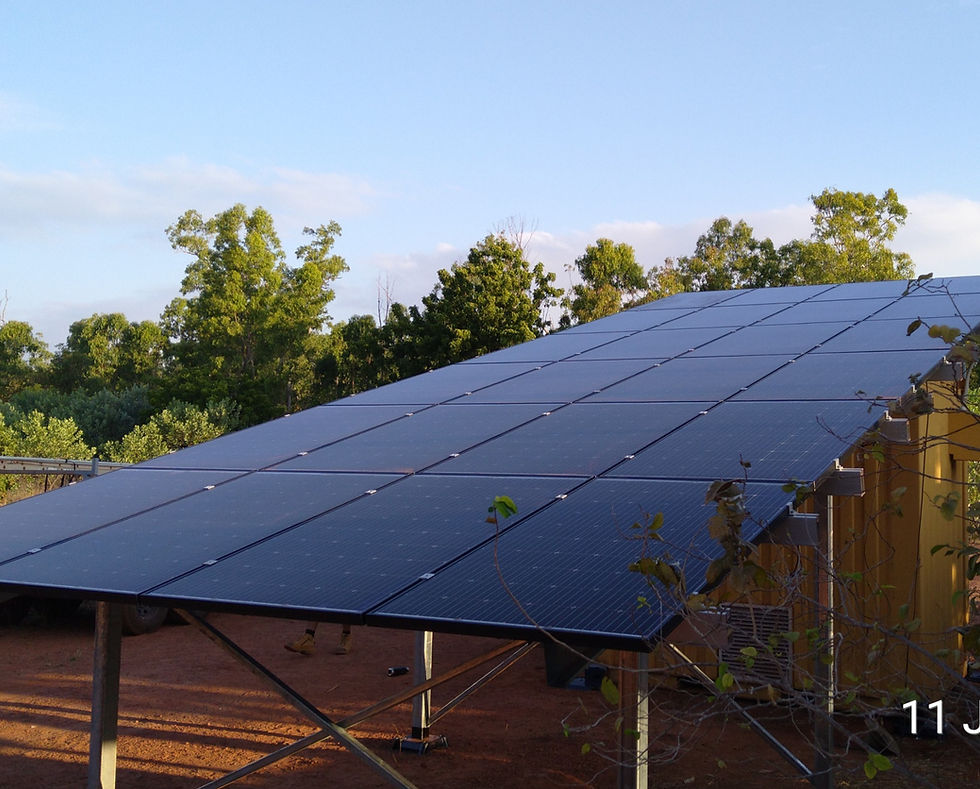



Off Grid Energy Systems
Saltwater Solar are Off-Grid energy specialists.
We have been helping farmers, tree-changers, remote communities, businesses and fringe dwellers meet their energy needs since 2007. Technology has changed a lot, but the requirement to match energy consumption with energy production, and the need for reliability and user-friendliness, remain the same.
Off-grid system owners are also power station operators - whether they like it or not - and it is a high priority to make sure they have the knowledge and confidence to play this role. It is not that hard. Saltwater Solar selects components that last for years and are easy to use, and provides appropriate training and ongoing mentoring to keep your power supply operating without hiccups - and without callouts.
Where to start
-
Work out how much energy is required by completing a load audit.
-
Saltwater Solar can help tweak your planned energy consumption to make good use of available resources
-
Where customers are converting from generator-only supply, as part of the design process we will install an energy use data logger to get a clear picture of time-of-use energy needs. This is especially useful in larger systems to accurately match the size of battery banks, seasonal energy use, and acceptable generator run times.
-
Agree on a system size and budget.
-
After installation, Saltwater Solar provides ongoing technical advice and care.

Terms explained

The difference between Energy (kilowatthours) and Power (kilowatts) is an important distinction to make.
-
Energy consumption - kilowatthours per day (kWh/d) - is the most important number and the starting point for the design process. From this we can determine the amount of energy storage required, and with local historical climate data, the size of the solar array.
-
Power. The number of appliances - pumps and air-conditioners and kettles and computers - and how often they are turned on at the same time, adds up to a property's Power requirements. This determines the size of your inverter, and back-up generator - measured in kilowatts (kW).
Things to consider - balanced systems and backup generators
We can supply all your energy needs with 100 per cent renewable energy.
Obviously, if you use a lot of air-cons you will need a lot of solar panels and batteries. The only real limit is how much you are willing to pay.
Unfortunately in the tropics, the time we want electricity the most, for air-conditioning, is also the time when we have the least amount of sunshine, due to the wet season. So to provide solar power for everything at all times means we will need a pretty big system, because when it is very cloudy, not much sun gets in.
So its good if we have another option.
Luckily we do! Backup generators. Just because you have a generator in your system, doesn't mean solar is not up to the task. Its just a matter of balance. Most systems we design and install have backup generators, but most of them rarely get used. Perhaps less than 100 hours each year during the rainy months.
But they are a very important part of the system. As well as allowing people to run air-cons through sweaty nights in the middle of the wet season, generators also ensure the batteries get charged to 100% regularly. And this is essential to meet the warranty requirements of some batteries.
We program our systems to start the generator automatically so it just needs to be refueled and services - once per year in most systems.
On larger systems in stations and roadhouses with very large loads that run 24 hours per day, we can use solar energy to reduce fuel consumption. The solar can run all the loads during the day, and the generator can run through the night. This saves on fuel, and also saves on a huge battery bank, until they too come down in price.
